Jakob Wirbel, PhD

Certain cancers of the blood are treated by transplanting stem cells that can regenerate all kinds of blood cells from healthy donors. Even though this procedure has the potential to cure the cancer, common complications such as bloodstream infections or graft-versus-host disease (when the body rejects the donor cells) can lead to major side effects and even death. There is substantial evidence that these complications are linked to the microbes residing in the gut, collectively termed the gut microbiome, but the exact mechanism for this interaction is unknown. To address this knowledge gap, Dr. Wirbel will study how the genomes of gut microbes change over time in a large cohort of blood stem cell transplantation patients, using modern DNA sequencing techniques and developing novel analyses pipelines. He will then investigate whether the genes that are changing in microbial genomes might influence the human immune system and thereby contribute to these clinical complications.
Dr. Wirbel plans to develop a computational tool for the reference-free analysis of microbial genomes over time based on long-read sequencing. By comparing newly assembled genomes across different sampling time points, the tool will detect structural variation (deletion or insertions into the genome) in microbial genomes. Additionally, genomic inversions (“flipping” of the orientation of DNA) and genes associated with these changes will also be identified.
Ahmed Roman, PhD
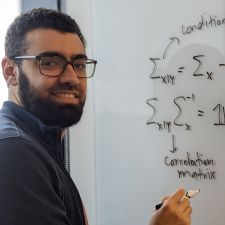
Dr. Roman [Leslie Cohen Seidman Quantitative Biology Fellow] aims to develop mathematical tools to determine which genes are associated with resistance to chemotherapy. Given genomic information from pancreatic cancer patients whose tumors are resistant or sensitive to chemotherapy, this tool will identify genes that distinguish the two populations. These genes can then be explored as potential drug targets that can sensitize chemotherapy-resistant tumors to treatment.
Dr. Roman’s research relies on the use of information theory to improve the ability of neural networks to find genes whose RNA expression distinguishes chemotherapy-sensitive from resistant patients. Another research direction is to leverage prior knowledge, accumulated over decades about gene-gene interactions in the laboratory, to inform the architecture of the neural networks or use large foundation models training on millions of cells to study cancer.
Jeremy A. Owen, PhD
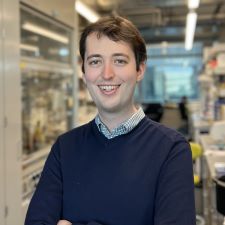
Chromatin remodelers are complex protein machines responsible for packaging DNA and regulating gene expression. Their dysfunction is strongly implicated in cancer. For example, certain types of sarcoma and ovarian cancer are driven by mutations in a chromatin remodeler called BAF. Combining experiments with theoretical work, Dr. Owen’s research aims to understand how remodelers recognize their target sites in the cell’s nucleus. By expanding our understanding of chromatin remodeling, the findings of this research will provide the groundwork for more effective cancer treatments—suggesting how drugs might target chromatin remodelers—as well as enhance our understanding of how existing drugs that target remodeler-adjacent mechanisms might work.
A central aim of this project is the development of new, quantitative models to explain the behavior of chromatin remodelers seen in experiments. Dr. Owen will achieve this by successive rounds of passing between theory and experiments repeatedly—measuring, modeling, then measuring again. For comparison to experiments, model predictions will be extracted computationally (e.g., numerically solving ODEs, or by exact stochastic simulation using Gillespie’s algorithm) or analytically (e.g., by the King-Altman procedure, and variants), as appropriate.
Isabella N. Grabski, PhD

Only 3% of cancer drugs in clinical trials ultimately receive FDA approval, compared to 15-33% of drugs for other types of diseases. Recent studies have suggested that many drugs being explored for cancer treatment do not actually target their intended molecule in the cell. This has important implications for efficacy and safety and could be a key contributor to the low FDA approval rate. Dr. Grabski [Kenneth G. Langone Quantitative Biology Fellow] has created a novel experimental and computational framework to identify drug mechanisms of action at molecular resolution by leveraging CRISPR-based technologies. With this framework, she hopes to more precisely identify how a given cancer drug functions in the cell. This could serve as a powerful tool for preclinical evaluation and even potential discovery of new cancer therapeutics.
Dr. Grabski’s project aims to identify drug targets by modeling drug transcriptional response as a sum of genetic perturbation responses. She will perform this deconvolution in two steps. First, she will use a multi-condition latent factor model to produce denoised estimates of perturbation effects. Second, she will leverage sparse Bayesian regression techniques to map drug responses to these perturbation effects, in a way that can summarize complex patterns of uncertainty among related perturbations.
Carolina Trenado-Yuste, PhD
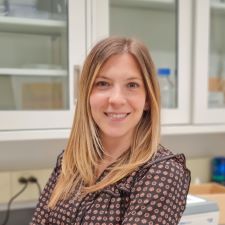
Breast cancer is the most frequent cancer in women and the second-leading cause of cancer deaths in women worldwide. Triple-negative breast cancer is among the most aggressive subtypes; its name refers to the fact that it lacks all three primary markers of breast cancer, making it particularly challenging to detect and treat. Although our ability to detect early-stage breast cancer has improved substantially over the past few decades, anticipating whether and how fast a tumor will progress to metastatic disease remains challenging. Dr. Trenado-Yuste aims to improve our ability to predict a tumor's disease course and response to therapy by creating a new framework of biomathematical models and experimentally engineered tumors, which may aid in prognostication and decrease cancer-related deaths.
Experimental research in cancer biology also drives a need for new computational models. This project focuses on mathematical modeling, with an emphasis on developing agent-based and pharmacokinetic models, to help clarify how tumor spheroids progress and respond to drug treatments. The importance and innovation of the proposed theoretical and computational methods lie in their potential to identify the optimal combinations of personalized treatment schedules for individual patients.
Youngmu (Nick) Shin, PhD
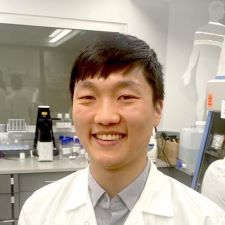
Cells in our body communicate with each other in a highly selective manner. These cell-cell interactions form the basis of numerous physiological functions, such as neuronal wiring and immune recognition. Dr. Shin plans to explore the general principles of cell-cell communication by constructing a synthetic synapse and studying its organization and functional diversity. His findings will elucidate the mechanisms that organize cell-cell interfaces involved in immune cell recognition of cancer and in the cell-type transitions associated with cancer and metastasis. This work will also provide a platform for engineering highly customized cell-cell interfaces, which may prove useful in engineering immune cell therapeutics.
This project employs the stickers-and-spacers model adapted from polymer physics. Macromolecules such as proteins and nucleic acids are described as a sequence of attractive domains called "stickers" and flexible, non-interacting domains called "spacers." Dr. Shin will use his lab's Monte Carlo simulation engine LaSSI (Lattice simulation engine for Sticker and Spacer Interactions) to calculate the average interactions between macromolecules and analyze their mesoscopic organization and phase properties.
Nicholas C. Lammers, PhD
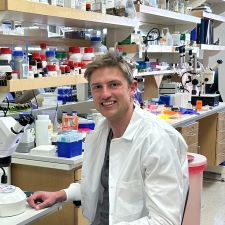
In both embryonic development and disease, the same genetic mutation can lead to highly variable outcomes in different individuals. Dr. Lammers aims to shed light on the drivers of this nongenetic variability using the developing zebrafish embryo as a model system. By combining fluorescence microscopy and single-cell sequencing, he will test whether subtle differences in gene expression within individual cells can explain why some embryos with a given genetic mutation survive to adulthood, while others perish within the first 24 hours of their development. His findings will provide a quantitative foundation for understanding the genetic and molecular basis of cancer outcomes in human patients where, for instance, tumors with the same underlying mutations often exhibit dramatically different disease courses.
Dr. Lammers will train Variational Autoencoders to learn low-dimensional latent space representations of whole-embryo transcriptomes and grayscale images depicting embryonic morphology. He will then train a third neural network to translate from transcriptional latent space to morphological latent space. Together, these three networks will comprise a new computational method, morphSeq, that takes single-cell transcriptomes of mutant and wildtype embryos as input and produces predictions for corresponding embryo morphologies as its output.
